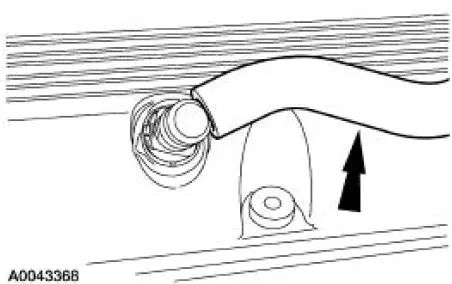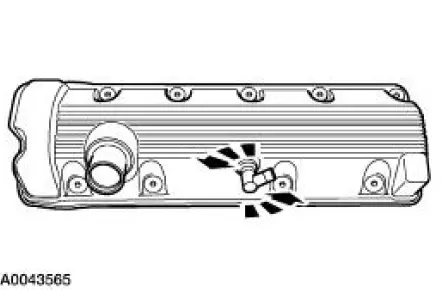Ford Mustang (1999-2004) Service Manual: Positive Crankcase Ventilation (PCV) Hose
Removal and Installation
1. Disconnect the hose on the PCV valve.

2. Twist and remove the PCV valve.

3. To install, reverse the removal procedure.
 Exhaust Gas Recirculation (EGR) Vacuum Regulator
Solenoid
Exhaust Gas Recirculation (EGR) Vacuum Regulator
Solenoid
Mach I vehicles
1. Remove the air intake scoop. For additional information, refer to
Section .
All vehicles
2. Remove the exhaust gas recirculation (EGR) vacuum regulator solenoid.
Disconnec ...
 Intake Air Distribution and Filtering
Intake Air Distribution and Filtering
Torque Specifications
a - Refer to the procedure
Intake Air Distribution and Filtering (DESCRIPTION AND OPERATION)
The air intake system consists of the:
air intake scoop (Mach I)
air cleaner ...
Other materials:
Brake Caliper Anchor Plate - Cobra
Removal
1. Remove the pads. For additional information, refer to Brake
Pads-Cobra in this section.
2. Remove the anchor plate bolts.
Installation
1. Follow the removal procedure in reverse order.
...
Handles, Locks, Latches and Mechanisms
General Specifications
Torque Specifications
LOCK REPAIR/REPLACEMENT SPECIFICATIONS
...
Principles of Operation
The vehicle has two module communications networks. The standard
corporate protocol (SCP) which
is an unshielded twisted pair cable (data bus plus, Circuit 914 [TN/OG] and
data bus minus, Circuit 915
[PK/LB]), and the international standards organization ...
